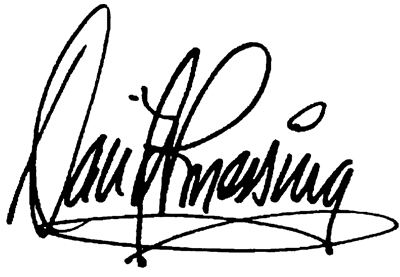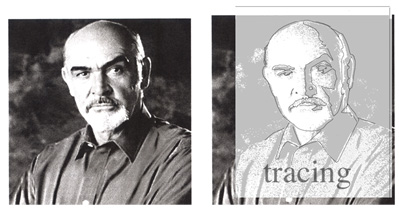TRACING … yes … no … maybe ?
… no amount of shading, color, or detail will ever hide poor structure.
Often the problem when working from reference photos is that they are loaded with “shading, color and details”! So how do you look through all that “finishing stuff” to get to the “starting stuff”, i.e. the structure beneath? Block your artistic ears ‘cuz I am gonna suggest the blackest of the black arts – which is the “never-confessed-to” practice of … TRACING! (To get the full effect of that statement, feel free to backup and reread the word “tracing” with an echo).
Over the 35 years I’ve taught art, I have had thousands of students who have created hundreds of funny and even touching moments in the classroom. But, when it comes to the controversial topic of “tracing”, only one guy comes to mind … Quik-Draw Bobby. Bobby had the “want to”, but the “can do” was missing in action … just not there on the right side of his brain.
There were usually four teachers per class, and by week eight of art instruction, we were all ready to suggest another career path for Bobby; perhaps one in math or engineering. Until one day, we were all amazed as we exclaimed “Bobby did this?” This was followed by another, and yet another pretty darn good drawing. Still doubting his artistic metamorphosis, we soon discovered the source of Bobby’s overnight burst of talent. We noticed Bobby would excuse himself for a potty break, trace his reference, and then, the little sneak would transfer the tracing onto his finished board. Ah ha!
I am sure most have, as beginner artists, had to answer the question of, “Did you draw this freehand or did you trace it?” The implication being that “tracing” is cheating. I hurry to add that it is cheating, and I am not condoning tracing as most tend to think of it. Rather, I am saying that it is lawful, good, and helpful to draw FROM your tracings. To make it simple, I am considering all forms of transparent to translucent papers, parchments, films, vellums and plastics “tracing paper”. I find the translucent papers are the best for the simple reason that its slight opacity blocks out the many finishing values, colors, and details that one really should not be dealing with at the beginning of a drawing. I like to use a portrait as an example of when it is helpful to use this technique. I am also often amazed with how a careful tracing of someone’s face, when lifted and viewed, doesn’t really look that much like the person in the photo. Now whatever the tracing looks like, that is the beginning structure and THAT IS WHAT YOU WILL DRAW FROM … no shadows, no colors … no wrinkles, eyelashes, or wisps of hair … just the basic head, the alignment and proportions of the facial features, and especially the outline shape of the head and hair style.
When trying to achieve a likeness, one of THE most important things to get right is the characteristic outline of the head and hair. You may not realize it, but if presented with just frontal and profile silhouettes of our friends and loved ones, most could easily be identified. So you are tracing to get a better reference from which to draw. At some point, your beginning sketch will look just like the tracing and that is when you can revert back to your original photo reference and begin adding details, colors, and values. This technique works great for any busy or complicated reference, i.e. portraits, caricatures, interiors, cars, anatomy and so forth. It is similar to an X-ray that allows you see what’s going on inside. Tracing helps you find the bones and structure of whatever might be the subject of your reference photo. So trace for the basics, and then draw from your tracing … just no cheating!
And believe it or not, Quik-Draw Bobby is now in college pursuing a degree in, of all things, art! I hope his “can do” someday catches up with his “want to”! 




Thanks Dave! May I share this on our company page? Sue